C. D. “Budd” Ruffin, the District 2 commissioner from rural Choctaw County, Ala., is a big guy—defensive-lineman big—and he sweats a bit as he stands in the grand marble rotunda of the Russell Senate Office Building in his sport coat and scally cap. Ruffin came to Capitol Hill to lobby Alabama’s congressional delegation to fund workforce development, infrastructure, and Narcan kits for police and emergency workers fighting the opioid epidemic. Veteran D.C. broadcast journalist Jacqueline Policastro turns on her camera and helps Ruffin adjust the microphone clipped to his lapel.
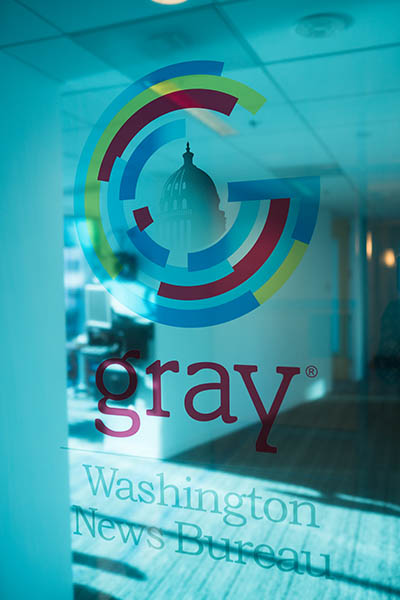
Last fall, Gray Television built a slick office suite a short walk from Capitol Hill, with a small studio and a glass-walled conference room.
“We want to make sure the opioid epidemic does not strangle our small communities, and our first responders should be equipped with anything that will help them do their job better,” Ruffin tells her. Ruffin’s lobbying efforts might easily go unnoticed by people back home. CNN and the New York Times aren’t interested, and local media in Alabama no longer have the resources to report from Washington, if they ever did. But a clip—of Ruffin talking about road funding, no less—makes the evening news on WTOK-TV in Meridian, Miss., a station watched by many of Ruffin’s constituents just across the state line.
“When elected officials go on political business trips, and many go on quite a few, our viewers want to know they are actually working and hear about their agendas,” says Pat Peterson, WTOK news director. “And the fact that a local county commissioner went to Washington to do the people’s business and we were able to update our audience while he was still physically in D.C. was very important.”
WTOK is owned by Gray Television, and Policastro (COM’06) is the chief of its Washington News Bureau. The Washington bureau is Atlanta-based Gray’s only news operation that is not part of one of its 100-plus stations. The Gray stations serve 57 small and medium-sized US markets and reach 10.4 percent of US households, primarily in the South, Midwest, and Great Lakes region. In June, Gray agreed to buy Raycom Media, Inc., for $3.6 billion. If the deal goes through, it will increase Gray’s reach to 142 stations in 92 markets, serving 24 percent of TV households.
Policastro has spent the last decade talking with people like Budd Ruffin, and producing the kind of Washington-based journalism that addresses the concerns of local TV news viewers—nuts-and-bolts reporting that is not slanted to the left or the right. “We approach every story with balance and with a local connection,” she says. “We ask: what’s the impact on people? Who are the voices for and against an issue? I think fair, unbiased local reporting is essential to informing viewers and voters across the country.”
It’s a practice that sets Policastro’s work apart from the national networks, which can’t spend their time and money on stories that are of interest to only one or two markets. It also sets Gray apart from the country’s largest owner of local television stations, Sinclair Broadcast Group, whose right-leaning coverage and commentary, recently called out by mainstream media, came under the microscope in March when the company required its TV anchors to read a one-minute script that echoed the president’s attack on what he calls “fake news.” This “fair, unbiased local reporting” is also, observers say, more important than ever in an age when false or inaccurate online reporting has the demonstrated power to influence national elections. Local news outlets like Gray’s are, in fact, the number-one news source for most Americans. A 2017 Pew Research Center study found that 37 percent of Americans most often get their news from local television, while 28 percent get it from cable news, 26 percent from network news, 18 percent from newspapers, 25 percent from radio, 20 percent from social media, and 33 percent from news websites. The same study found that 85 percent of Americans trust local news outlets; only 77 percent trust family or friends.
“We ask: what’s the impact on people? Who are the voices for and against an issue? I think fair, unbiased local reporting is essential to informing viewers and voters across the country.”
As recently as 20 years ago, local newspapers kept close track of representatives in Washington, D.C. The collapse of the newspaper industry has decimated the Capitol reporting corps; 21 of 50 states do not have a single local daily newspaper with its own dedicated D.C. correspondent accredited to cover Congress, according to a 2016 Pew Research Center study. Statistics are hard to track, but Newsonomics author and Nieman Journalism Lab columnist Ken Doctor says he expects that by 2020 the number of broadcast journalists in America will exceed the number of print journalists for the first time. And while the ranks of digital reporters have been growing, many of them specialize in niche topics or political gossip. “That watchdog function has absolutely been watered down,” Todd Gillman, the Dallas Morning News Washington bureau chief, told Pew.
“What happened was cutbacks, what happened was the internet, what happened was all traditional media getting squeezed,” says veteran media watcher John Carroll, a College of Communication assistant professor of journalism. Many news outlets can no longer cover their state house, Carroll says, let alone Capitol Hill. “There’s a big gap there, in a range of traditional media, in what they can provide to local audiences.”
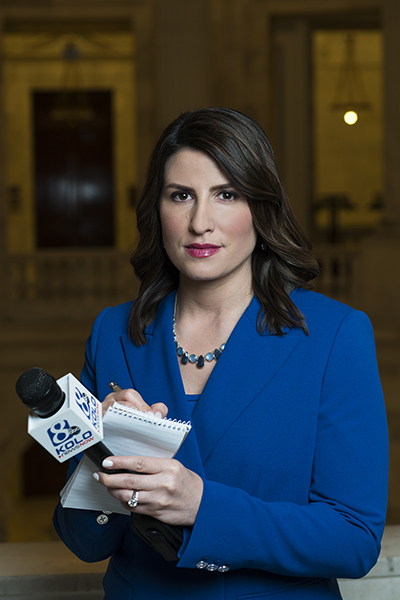
“Our perspective is much different than big media,” says Jacqueline Policastro, chief of Gray’s Washington news bureau. “We actually know the voters.”
Online news sources command a huge chunk of Americans’ attention, Carroll says, but they lack the broad-based impact that newspapers enjoyed, at least when it comes to telling Americans what their government is doing. “There are a number of terrific investigative organizations that operate in the digital media,” he says. “But that tends to be more entertaining and diverting content as opposed to more substantive. And it can be faked.” The great mistake that the media made in moving to the internet, he says, may have been eliminating the traditional media’s gatekeepers in favor of computer-generated lists of “Today’s Most E-Mailed Stories.”
Carroll also thinks that connections to local audiences can influence the media as much as the media influence local events, endowing Gray with a perspective that’s distinct from the pack. He points out that a local focus gave Knight-Ridder reporters a different and more accurate perspective on the Iraq War. “They were operating on a different plain than the East Coast media, which were pretty much in lockstep, flogging the White House line on Iraq and weapons of mass destruction,” he says. “Because they were not part of that pack, they were much more skeptical of what came out of the Bush White House and less inclined to have this copycat coverage.”
Policastro sees a similar advantage. “Our perspective is much different than big media,” she says. “Rather than just talking about what voters want or need or citing a poll, we actually know the voters. We travel to our stations when Congress is out of session. We talk to people who live there and we see issues firsthand.”
When the president talks about NAFTA, she says, Gray reporters know what a big-picture trade deal means for a small manufacturer in Michigan or Ohio. When the FCC talks about rural broadband, they know what kind of access issues their viewers are facing.
“We are delivering the truth about the real implications of policy decisions back to decisionmakers in Washington and setting the record straight against the pack journalism mentality,” Policastro says. “Our coverage highlights what’s important to the local communities we serve. Isn’t that what good journalism is all about?”
Policastro hired Ted Fioraliso (COM’07) (left) as executive producer and Peter Zampa (COM’15) (right) as multimedia reporter.
She Has No Quit Button
As a College of Communication undergrad, Policastro wrote for the Daily Free Press and racked up half a dozen internships in TV news. She did a short stint for Associated Press Television in Washington, then wangled a gig reporting from D.C. for the small station group Lilly Broadcasting. “I started in my 500-square-foot apartment in Virginia,” she says. “I was recording voiceovers in my closet with a blanket over my head.”
There were other gigs, too, one as an evening anchor in Erie, Pa., and one as a morning reporter in Indianapolis, but Policastro found herself itching to get back to the Hill. In 2012, she opened a two-person Washington bureau serving a handful of Lilly stations. When she finally won the rights to a closet-like workspace in the cramped Senate press gallery, she spent the weekend cleaning it herself.
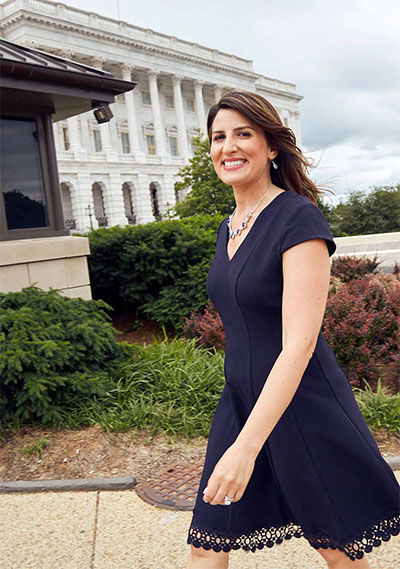
“There are a lot of places I could go and manage news, but I like doing it here, because I know it has impact,” says Policastro. Photo by Beth Perkins
In 2014, her main Lilly stations were bought by Gray, a rapidly growing outfit that owns stations affiliated with each of the major networks, stations usually ranked number one or two in their markets. Kevin Latek, Gray executive vice president and Policastro’s boss, says her work for Lilly convinced him that local stations want the Washington angle on local issues.
“It’s the news director calling up and saying, ‘Hey, there’s this hearing on invasive species that’s a really important issue here in the Great Lakes that absolutely no broadcast network is going to cover. Can you cover it for us?’” says Latek. “Or, ‘We’ve got people from the local market coming in for the pope’s visit. Can you track them down?’ Or the Women’s March or you name it. Our newspeople really connect with the communities.”
Gray told Policastro to keep doing what she was doing, to do it for more stations—and to do it on a budget. The bureau adopted inexpensive cell phone and internet technologies to go live on Gray stations and move video clips back and forth between the bureau and the stations, avoiding steep broadband and satellite charges. They made all multimedia reporters function as their own crew, schlepping camera and tripod around D.C. in a package that Policastro designed. “Sometimes duct tape is the solution instead of buying a new piece of equipment,” Latek says.
Last fall, the company built a slick office suite a short walk from Capitol Hill, with a small studio and a glass-walled conference room looking down on Georgetown University Law Center next door. “We were impressed with the amount and quality of content coming out of the D.C. bureau, so we thought it was worth an experiment to see if it would be of benefit to our stations and viewers to continue the bureau and expand it to different markets,” Latek says. “We trusted that Jacqueline could figure it out, because she’s been able to figure out a whole lot of other obstacles.”
“Our coverage highlights what’s important to the local communities we serve. Isn’t that what good journalism is all about?”
Latek likes to tell a story about election night 2016, when Policastro was at a Hillary Clinton event in New York fuming over the outrageous amount the campaign charged reporters for internet access. And the connection wasn’t even working. “So Jacqueline climbed down underneath the media risers on her hands and knees, which I’m sure no other reporter would have done, found the cable with blue tape that said Gray TV on it, and followed that cable all the way to a staffer for the campaign who was using it. Obviously, we got our internet access back.”
Gray also told Policastro to hire more people, and she did, starting with Ted Fioraliso (COM’07). She met Fioraliso on a field trip to the Boston Globe in 2004, when both were BU students, and had hired him at Lilly back in 2012. Fioraliso is now senior reporter/executive producer at the bureau and Policastro’s second in command. While she’s working on the bureau’s budget or up on the Hill persuading a politician to go on camera, he’s back at the bureau, supervising the six reporters and producers she has hired and tracking everything on a massive, color-coded Airtable spreadsheet. One of Policastro’s other hires is reporter Peter Zampa (COM’15), who as a BU senior hosted a live midterm election show on BUTV10.
Gray Television
 100+ Stations
100+ Stations 10.4% US households reached
10.4% US households reached 57 Markets
57 Markets
Anchoring up in Anchorage
Tracy Sabo, the news director of Gray-owned KTUU-TV in Anchorage, Alaska, is accustomed to being out of the office—way out of the office. She recently spent 11 straight days in the field covering the Iditarod. The NBC affiliate is the dominant station in Anchorage, and it brands itself as Alaska’s News Source. Its signal is simulcast on stations in Juneau and Sitka, and it broadcasts to 240 rural communities across the state via satellite, cable, and a state-funded low-power transmission system known as the Alaska Rural Communications Service.
KTUU is Gray TV’s biggest single user of Washington-based content. And even though Alaska has a special relationship with the federal government—more than half of its land is federally owned—the popularity of Beltway reporting is something that Sabo would not have predicted two years ago when Gray bought her station.
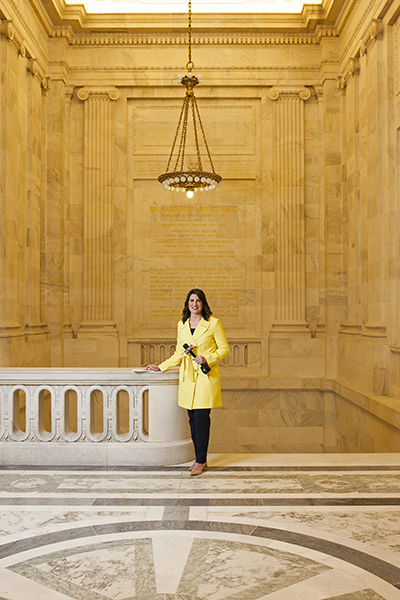
Before working for Gray Television, Policastro was an evening anchor in Erie, Pa., and a morning reporter in Indianapolis.
“I was far less convinced that KTUU would find this resource as beneficial as it might be to Lower 48–based stations,” she says.
“Alaskans have far more interest in the stories that take place within the 663,000-plus square miles we call home. We often lead with stories on fishing and hunting, summit expeditions on Denali, bear and moose attacks. National and international stories are an incredibly small part of our news broadcasts.”
Sabo’s opinion changed with Policastro’s reporting of a 2016 Supreme Court ruling limiting federal authority on nonpublic lands within Alaska’s national parks, preserves, and other national interest areas. Sabo says the story “resonated deeply with our local audience.” Then came the King Cove Road story, which pitted conservationists against those who wanted a 30-mile road across the Izembek National Wildlife Refuge, allowing residents of remote King Cove to access an airstrip in Cold Bay for medical evacuations and other needs. A land swap between the state and the Interior Department finally resolved the dispute in January after years of controversy. “The collaboration between KTUU’s reporting on the issue for many years—and the Gray bureau’s assistance in reporting critical updates from D.C.—very well may have had an impact on the timely decision,” Sabo says.
The bureau has helped Gray stations do more of what Policastro thinks local media have an obligation to do. When Gray stations in Wisconsin (WEAU in Eau Claire, WMTV in Madison, and WSAW in Wausau) reported the mishandling on Capitol Hill of whistle-blower reports on the overprescription of opioids at a Veterans Affairs medical center in Tomah, Wis., the exposure led to the firing of staff in both the US Senate and the VA, Policastro says.
“I started in my 500-square-foot apartment in Virginia. I was recording voiceovers in my closet with a blanket over my head.”
“Pushing for accountability and covering Congress the way we do is the right thing to do,” she says. “There are a lot of places I could go and do news or manage news, but I like doing it here, because I know it has impact.”
What it doesn’t have, according to Latek, is a clear bottom-line return. “I’d be the first to say there’s no return on investment on this that I can put on a profit-and-loss statement. That’s not the way we measure this,” he says. “We believe it’s an important part of our mission to serve our smaller local communities in ways they probably wouldn’t be getting otherwise. Since we are committed to making news the primary driver of our company, it was just fitting that we would invest in a D.C. bureau.”
Although it’s impossible to measure, Latek does think that the Washington bureau may help his stations’ ratings. He spends a lot of time on the road, talking to executives at Gray stations, and one of the things they talk about is what the execs hear from their viewers. “I am constantly hearing that people locally have responded to the bureau and get a kick out of knowing that their little TV station has a reporter in Washington,” Latek says. “We think the path to success is to be assiduously nonpartisan. We think it’s better news.”




































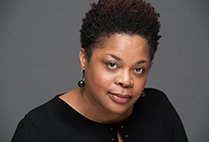










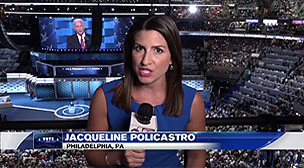
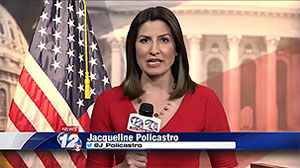
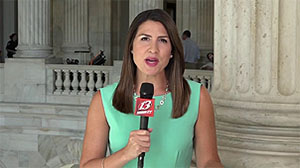

 100+ Stations
100+ Stations 10.4% US households reached
10.4% US households reached 57 Markets
57 Markets
Related Stories
Can You Tell Real News from Fake News, Propaganda, Lies?
COM media literacy events begin
Fake News Influences Real News
Study finds fact-checkers have little influence on online news media
In the Fake News Era, Native Ads Are Muddying the Waters
COM online experiment: fewer than one in 10 people can tell sponsored content from an actual article
Post Your Comment